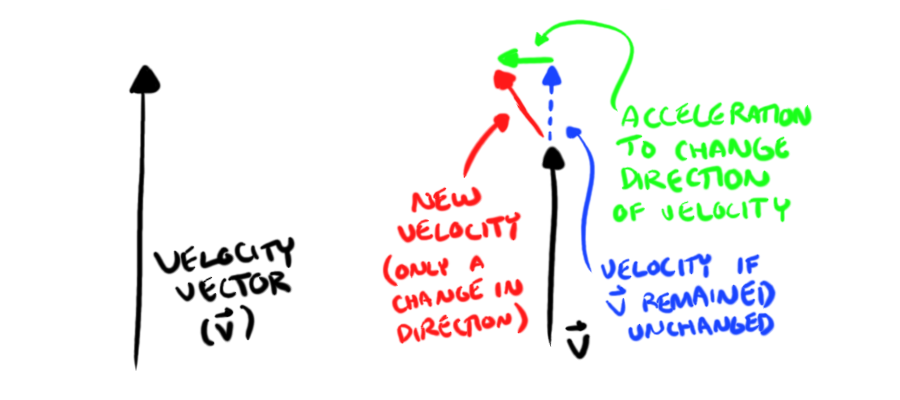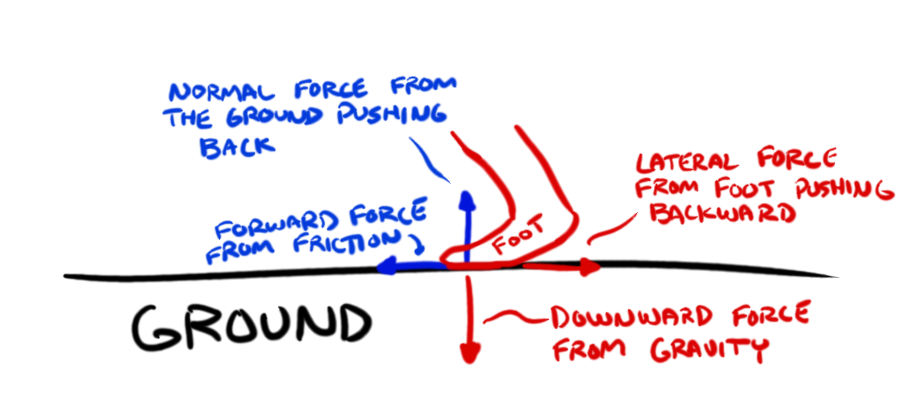 The Physics of The Flash, or Inertia is an Indomitable Scourge
The Physics of The Flash, or Inertia is an Indomitable Scourge
This week, I just finished re-watching the first season of The Flash, and while it's a perfectly enjoyable show (Grant Gustin is great) that exists in the strange Hollywood land of nonsensical computer user interfaces and perfectly polished and machined electronic prototypes, the whole basis has a few serious flaws of the physical variety. So, in my quest to ruin all things that are good and fun, I'm going to examine the physics of the character The Flash himself, and how he would operate if the world the show was based in accurately reflected our own.
Let's assume Barry Allen (spoiler: Barry Allen is The Flash) is immune to the effects of his own speed, in part because the biological effects of rapid acceleration are things I don't know as well, but even more so because that's actually canon. The speed force protects speedsters from the physical ramifications of what they do (up to and including paradoxes). This means that we're going to ignore what The Flash's speed would do to him, but we must still concern ourselves with what his speed may do to his environment. And that's where things get fun. Often, and especially when chasing another speedster, The Flash is seen racing along streets at insane speeds, and then making right-angle turns nigh-instantaneously onto another street. What most people forget about movement is that acceleration is any in velocity, which means that changing direction means acceleration. Velocity is a vector, which means it has magnitude (speed) and direction (...direction). In order to change that vector, either by increasing/reducing the speed, or changing its direction, requires acceleration.

You are constantly accelerating in every moment of your life.
Acceleration means that there must be a force. That's just Newton right there. In order to start, stop, or turn, Mr. Allen must push against something. As a runner, that something is the ground. Now, some of that force is simply lost to the up-down forces (which are perpendicular to the velocity, so we don't care about them). But the remaining parts are horizontal forces, using friction to push sideways against the ground. Newton's third law let's Barry move, for as he pushes sideways against the ground, it pushes back at him with an equal and opposite force. Since the ground doesn't move, he accelerates away from the direction he applied the force.

At least 80% of kinematics is drawing free-body diagrams like this.
This is how anyone turns, really. Your car does the same thing when you drive, so you know it's good up to certain speeds. But there's the rub: up to certain speeds. We all know that cars start to skid if they turn too tightly while going too fast. That comes when the inertia of the car, is too great, and it overcomes the frictive forces. You still get kinetic friction as you slide along the road, which does slow you, but not nearly as well as static friction. And eventually, the car slows enough for static friction to take over and no longer be overwhelmed, and the skidding stops. Now, The Flash never seems to skid, despite going many, many times faster than a speeding car. How does he do it?
Well, there is a way. Frictive forces are directly proportional to the normal force applied. In all normal cases, what that means is that the static friction you or a car experiences is directly related to the weight of the thing. Heavier things experience more friction, which you know if you ever tried pushing something heavy across a rough surface (side note: weight is a measurement of force, the mass of the object multiplied by the local gravitational acceleration). This means that if Barry can somehow push downward with a large amount of force while turning, he'll get better "traction" in his turn, and be able to make it tightly without skidding. Let's assume the speed force can do this, too. If he's not skidding, that means the sideways force he is applying in order to turn is no longer spread out during the duration of the skid. And changing direction at the velocities he is travelling at is going to take a lot or force. Specifically, twice the force it would take to simply stop in the same distance as the radius of his turn. You can do the math for this, but there's also a rather intuitive way of thinking about it: In order to go from moving in one direction at a given speed to moving in a perpendicular direction at the same speed, you need to stop all motion in one direction, and begin moving in the other direction by that same speed. Since the directions are at right angles to each other, you can't share any of your momentum between the two.

If you want to do the math, F=ma for stopping/starting, and F=mv2/r for turning.
So, the real question now becomes: can the environment withstand twice the force of a Flash-sized object slamming into it as whatever speed he's going at? The answer is probably not. That's because, while materials like concrete and asphalt have very high compressive strength, they have relatively weak tensile strength. That means that pressure on the asphalt from The Flash might not break it (though it depends on how fast he's going when he turns), but the shear forces from the lateral force of his turn will likely rip the road apart. Other substances he might run on (such as dirt) are even less forgiving. Turning on soil would likely leave huge craters and mounds of displaced dirt. And this is just property damage. It gets worse when you consider how he saves people.
Often The Flash will, while running at super speeds, grab someone to bring them out of harm's way. This is noble and very heroic of him, but these people have inertia. According to Newton's first law, an object at rest, such as a human being, will stay at rest unless acted upon by an outside force, such as The Flash. This means that, since Mr. Allen shows no apparent signs of slowing as he grabs someone who is in danger, they accelerate to the same speed as him in essentially an instant. That force which applies the acceleration isn't across their whole body, either. The tensile strength of the human body certainly isn't up to the forces that would be applied (and neither is the compressive strength). Think about it, and you'll get the picture of what might happen to someone whom he grabs while at super speed. They won't stay that person for very long.
These are by no means the only physical problems (oh, man, does it get bad when the show tries to justify some of the metahuman's super powers using physics), but they're the primary issues with the Flash's super speed itself. And they both relate to a thing known as inertia. Think of inertia as a body's reluctance to change how its currently moving. When you're moving forward, and go to turn, your forward inertia resists the change in velocity. If you're standing still, and go to move, your inertia resists the change in velocity. If you're moving fast and go to stop... you get the idea. The neat thing about inertia is that it is independent of gravity. It has nothing to do with weight at all. You have the same inertia on the moon as you do on Earth—it's just as hard to change your velocity vector. It depends only on your mass. Inertia can't be removed by shifting where you are in space, or your reference frame. It is always there. It is an indomitable scourge, no matter who, what, or where you are. Even if you're The Flash.
